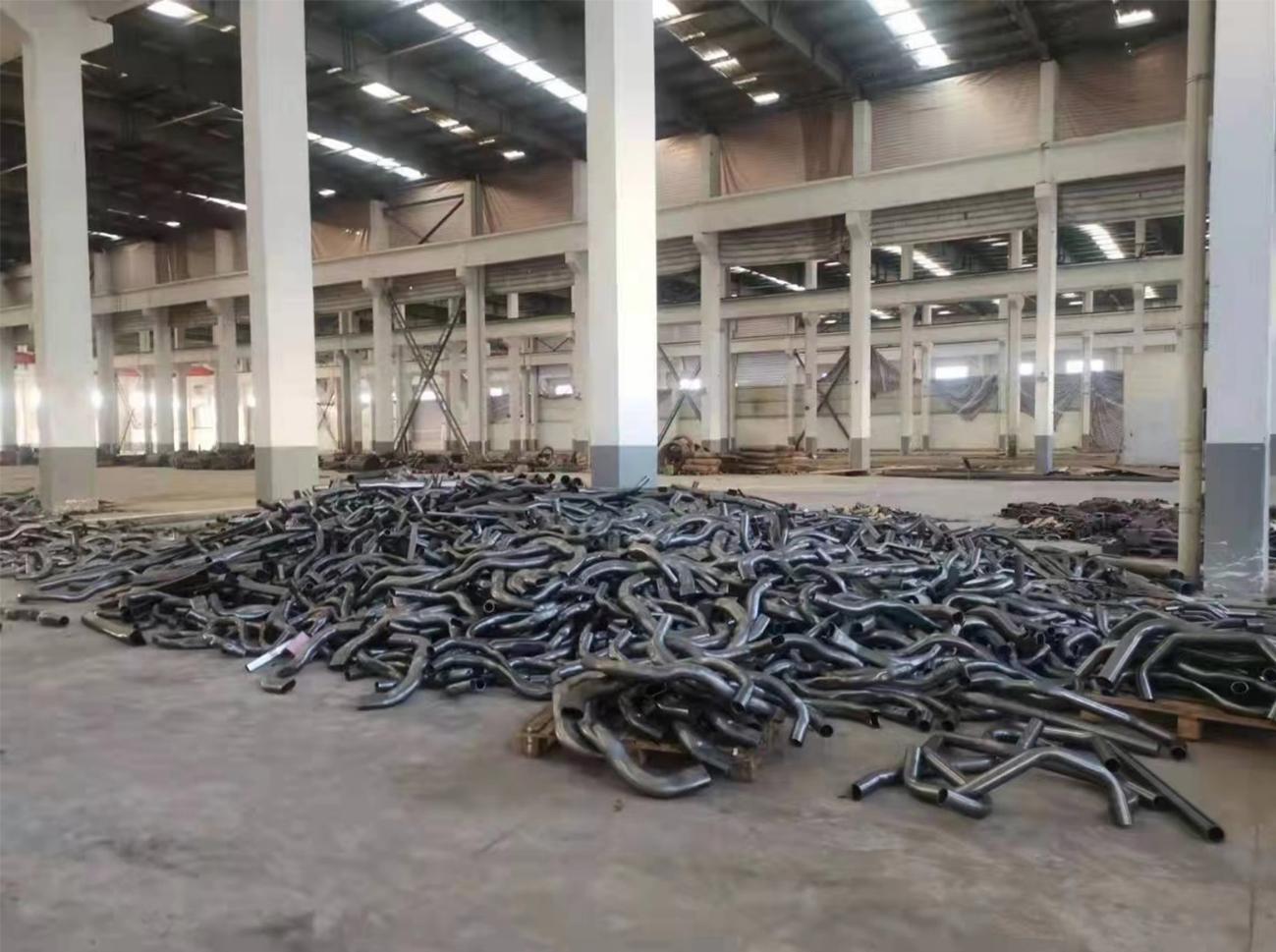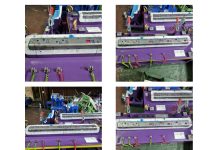Losing the Customer is the Hardest of All Lessons
Recently, we were called in to consult on a tube part that our customer had been struggling with for two years running. The supplier was responsible for providing the part to an OEM and the picture says it all! The tool they made was for a rear axle side member.
The project was initiated in 2019 when the initial simulation was carried out. The supplier (hereafter referred to as the press shop) used another software brand (not AutoForm) and their results did not highlight any need for design changes. However, during production runs they were confronted by their worst nightmare and tried some unconventional workarounds.

This is a true story of how robustness analyses can save millions of dollars and probably your manufacturing business.
The project and the problem
After the initial simulation, the part was put into production with the first parts being produced in early 2020. The manufacturing required three processes: bending, mechanical preforming and hydroforming.
The process started with a straight tube, which saw four bends applied along the length with the tube now resembling something similar to a bicycle handlebar. The second was a mechanical preforming process, which required the use of a die where the part was punched. This was followed by a third process of hydroforming, which aimed to change the tube cross-section so that it would no longer be circular.
After their first production run the engineers saw splits and cracks on both the left and the right side. Upon further investigation, the realized reject rate was over 50%! This, of course, had huge ramifications on cost feasibility. It was a desperate situation.
The countermeasures for the part defects
Unfortunately, the tryout and production team were not inclined towards finding a solution through simulation. They preferred to defer to tryout know-how to come up with manual remedies to correct the tool. They tried the following solutions:
- Manual adjustment of various process parameters
- Plastic wrap
- An expert consultation
- Manual adjustment of various process parameters
The first remedy was to vary the process parameters and observe the difference in the final part.
The bending angle was increased in steps but that didn’t work. Next, the pressure was varied but they could not balance out the wrinkles and the splits. They had no reference for modification. Without solid guidance from simulation analysis, tryout was left in the dark and had to attempt the adjustment of many values for process correction, including the pressure, lubrication, surfacing, tube length, thickness and diameter. No trial and error methods worked, despite the number of correction loops, the defects persisted. Now things got drastic.
- Plastic wrap
When manufacturing prototypes, we often see the use of plastic wrap to help with the material flow and lubrication. The wrap enables the material to flow as needed, helping it avoid splits and other defects. However, it is a time-consuming and expensive undertaking. It is, therefore, not feasible in a mass production scenario.
The factory engineers tried this method next to reduce the number of reject parts. When they saw some success, they introduced this procedure to mass production.
This greatly increased the time and expenses associated with the project and the production output suffered as well. Unfortunately, this modification was not enough to turn things around. The rejection rate was still close to 50%.
To account for the losses and extra expenses, the press shop had to eventually increase the part price, passing on the unforeseen costs to their OEM customer.
The production continued for the time being but this stressed their customer relationship.
- Expert consultation
When the press shop couldn’t make any headway with the issue, they reached out to us at AutoForm for a consultation. We collected all the necessary data and ran a robustness analysis. Sure enough, the AutoForm simulation results matched the wrinkle and split pattern on the manufactured parts unlike the initial simulation result they had used.
The difference between their first study and AutoForm was not only a proper feasibility result, but the fact that our analysis accounted for variability in the process parameters. Their conventional software could only handle single values for each parameter at a time. Having previously run a single simulation with one material file they only had insight into a specific value for lubrication, pressure etc. without any accounting for natural variability. This increased the reject rate to 50%.
Conclusion
Our AutoForm simulation results were presented to the press shop’s team. They acknowledged that the results matched the actual part’s defects in size and location.
The company suffered two years of split parts, all the while trying to deliver the tube parts to their customer without having a viable solution. No manual “tricks” really helped.
Since our visit, we have learned that the OEM shifted to another supplier for the same part and the press shop might lose all the future projects from the OEM as well.
All this could have been avoided if the press shop would have decided to run a robustness analysis on the part at the beginning of the project. By achieving a feasible and robust design at the outset, the press shop could have delivered flawless parts within reasonable prices.
Readers may wish to view our one-hour video on “Minimizing Production Reject Rates” using AutoForm presented by Leonard Krauss.













